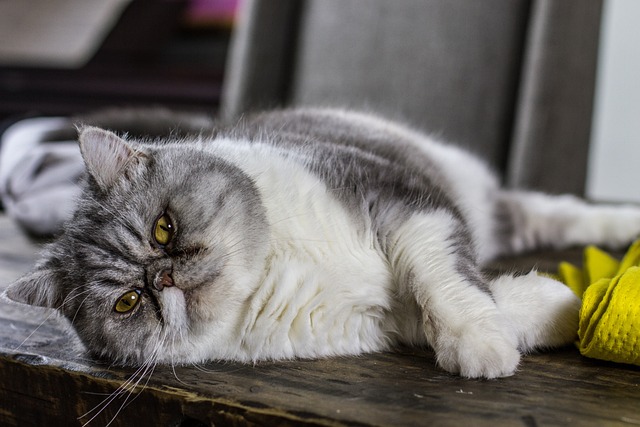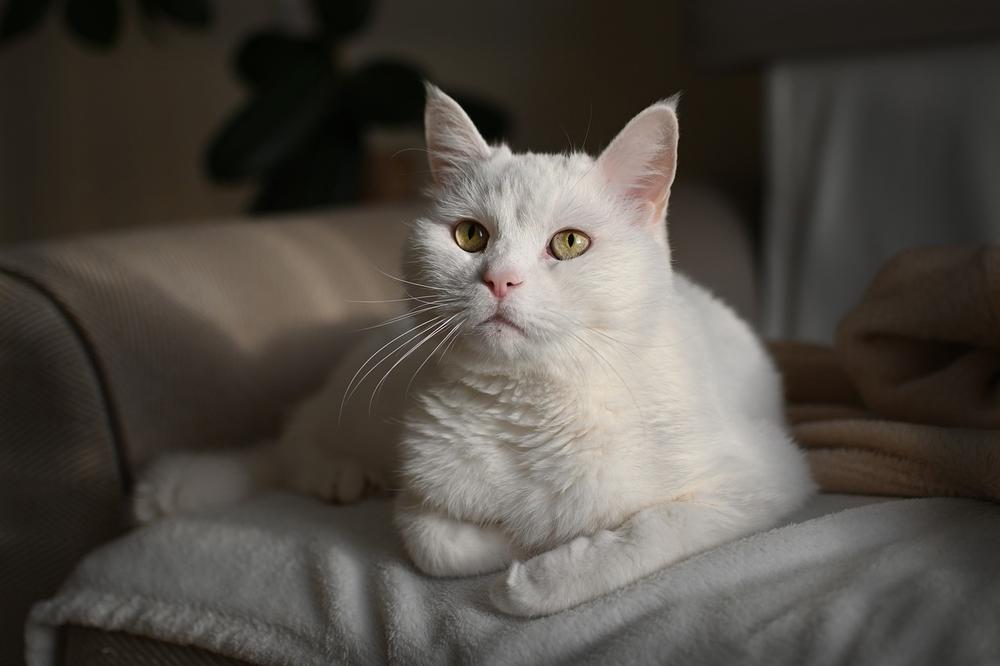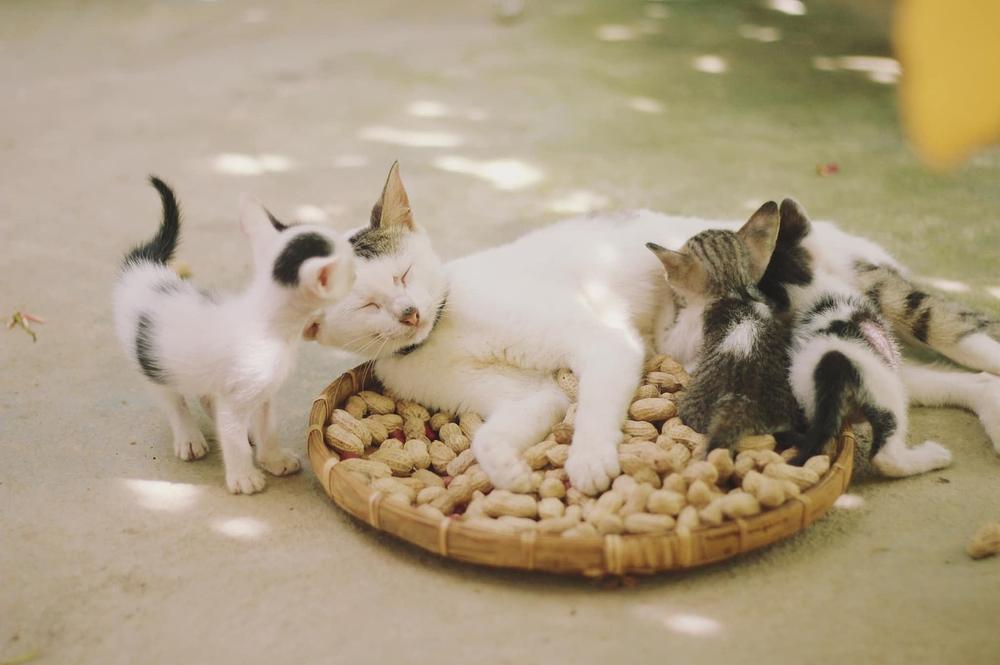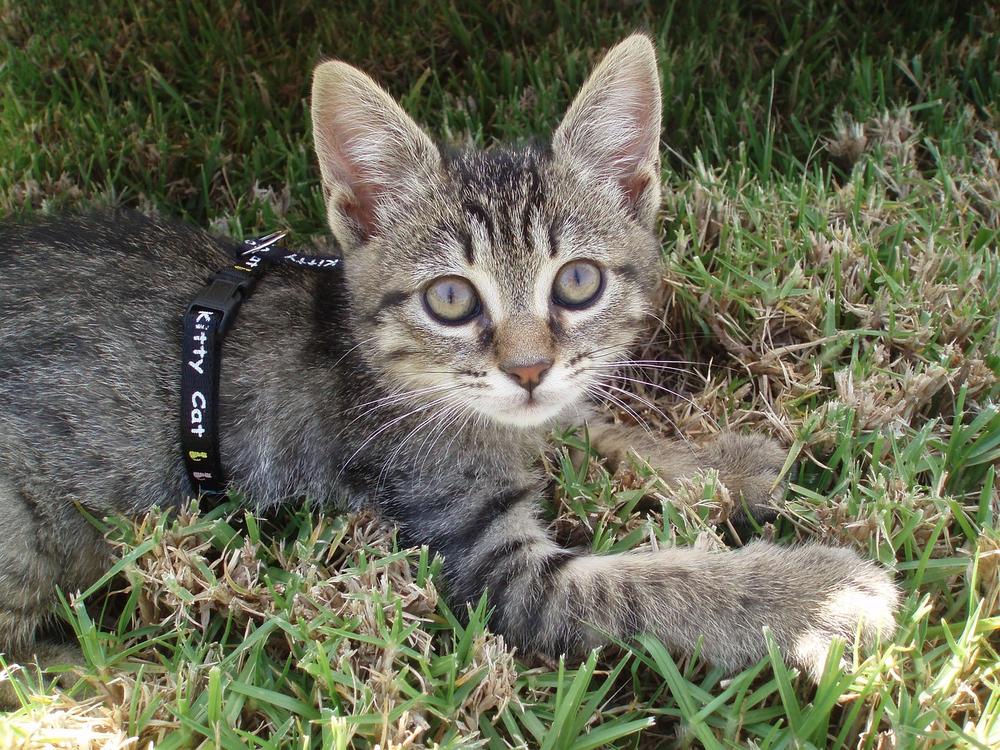Feline Diabetes: Symptoms, Causes, and Treatment

Picture this:
Your beloved fur baby begins to exhibit strange symptoms - increased thirst, weight loss, frequent urination.
Cue the panic.
Your mind starts racing, envisioning worst case scenarios, fearing for their health.
As the anxiety builds, you can't help but wonder:
"Is it feline diabetes?" 😱
The fear of the unknown and the well-being of your precious companion weighs heavily on your heart.
But fear not, dear reader, for we are about to embark on a journey together to demystify feline diabetes.
So, let's dive in and find the answers you seek.
Understanding Feline Diabetes: Causes, Symptoms, and Treatment
Feline diabetes is a serious condition for cats, so you need to know what causes it, the symptoms to watch out for, and how to treat it.
- The causes of feline diabetes can vary: it can be due to problems with the pancreas, kind of like type 2 diabetes in humans. Some cat breeds are more prone to it because of inherited factors.
- Keep an eye out for these symptoms: your cat drinking and peeing more than usual, losing weight despite having a big appetite, feeling tired all the time, and having a dull coat. If you notice these signs, contact your vet.
- It's crucial to regularly monitor your cat: the vet will do blood tests to diagnose feline diabetes and figure out the best treatment plan for your furry friend.
- Diet plays a key role: make sure your cat eats a consistent and balanced diet. Pick high-quality food that provides all the necessary nutrients and helps regulate blood sugar levels.
- Your cat might need insulin injections: depending on how bad the diabetes is, your cat may have to get insulin shots to keep their blood sugar in check. Your vet will give you detailed instructions on how to administer the injections safely.
- Regular exercise is good for managing feline diabetes: encourage your cat to stay active by playing with them or giving them interactive toys. Talk to your vet about suitable exercise routines.
- Some caretakers even monitor their cat's blood glucose levels at home: they use portable glucometers and urine test strips for this. It helps keep track of progress and ensures the diabetes is under control.
Take care of your cat's feline diabetes properly and give them ongoing care.

Knowing the causes, symptoms, and treatment options will keep your feline companion healthy and happy. 😺
Main points I'll expand upon further down this article:
- Feline diabetes symptoms include increased thirst, weight loss, and increased appetite.
- Insulin plays a vital role in managing feline diabetes.
- Cats of all ages and breeds can be affected by feline diabetes.
- Treatment options include insulin injections and monitoring blood glucose levels.
- Diet and weight management are crucial for prevention and management.
- Urine and blood tests are used for diagnosing feline diabetes.
- Regular check-ups are crucial for monitoring a diabetic cat's progress.
- Stay informed about the latest information on feline diabetes.
- Strict feeding schedule and promoting physical activity are crucial for management.
- Feline diabetes can go into remission with treatment and proper care.
Symptoms of Feline Diabetes: What to Look Out For
Is your cat showing signs of diabetes?
Here's what you should look out for:
- Your furry friend might be drinking and peeing a lot more than usual.
- Excessive glucose in the blood could lead to weight loss in your cat.
- Is your cat looking less energetic or dehydrated? It could be a sign of diabetes.
- Watch out for any changes in behavior, like aggression or excessive grooming.
- If your cat is meowing more often than usual, it might be a symptom of diabetes.
- Keep an eye on your pet's appetite. If they're always hungry, it could be a red flag for diabetes.
- Is your cat using the litter box less frequently? They might be coping with diabetes symptoms by urinating outside the box.
- Frequent vomiting could also be related to diabetes in cats.
- Poor coat quality or muscle wasting could indicate feline diabetes.
- If your cat starts walking on their hocks instead of their toes, it could be linked to diabetes.
If you notice any of these symptoms, you need to have your cat evaluated by a veterinarian for possible feline diabetes.

And now, I want to delve into the crucial role that insulin plays in managing feline diabetes.
As I mentioned earlier, cats with diabetes struggle to control their blood sugar levels, resulting in hyperglycemia or hypoglycemia.
But don't worry, there are effective management strategies and treatments available to help your furry friend live a good quality life.
Let's explore them further...
The Role of Insulin in Managing Feline Diabetes
Insulin, my friends, is the star of the show in managing feline diabetes.
It's a hormone that works hard to keep everything in check.
Let me explain it to you.
Insulin absorbs glucose into the bloodstream and delivers it where it needs to go - to those hungry cells of your precious cat.
Now, cats with diabetes struggle to control their blood sugar.
It's either too high or too low.
But don't worry, there are effective ways to manage it. First, follow your vet's instructions.
They have the expertise.
Also, stick to a regular routine, as consistency is crucial for diabetes management.
When it's time for insulin shots, pay attention to the concentrations on the syringe because accuracy matters.
And remember to store insulin properly in the refrigerator so it stays effective.
Let's talk about different types of insulin now. You've got rapid-acting, short-acting, intermediate-acting, and long-acting insulin.
Each has its own onset and duration, so listen carefully and administer accordingly.
Now, here's some truth: managing diabetes is a lifelong commitment. But guess what?
It can give your feline companion a pretty good quality of life.
To fine-tune insulin dosing and avoid low blood sugar episodes, blood glucose curves are super helpful.
They determine the optimal type and frequency of insulin doses while avoiding hypoglycemia.
Keep a close eye on glucose levels at home and do regular monitoring.
If you notice signs of low blood sugar, don't wait - take your furry friend to the vet immediately.
Finally, maintain a daily log tracking their diet, glucose tests, insulin doses, and body weight. This will help you spot any patterns or issues that require attention.
Great job, folks!
Stay tuned for more expert tips on dealing with feline diabetes like a pro!
But now, let's shift our focus to the preventative measures that can be taken to minimize the risk of feline diabetes...
Preventing Feline Diabetes: Tips for a Healthy Cat
To prevent feline diabetes and keep your cat healthy, here are 10 essential tips:
- Manage your cat's weight through portion control and a balanced diet.
- Keep your cat active with regular playtime and exercise.
- Monitor food intake by measuring meals and avoiding excessive treats.
- Provide interactive toys to engage your cat mentally and physically.
- Create vertical spaces like climbing trees or shelves for exercise and play.
- Limit the use of glucocorticoid therapy to reduce risk factors.
- Neuter your cat to decrease the chance of diabetes.
- Inform neighbors about your cat's condition to avoid unwanted feeding.
- Schedule routine check-ups with your veterinarian to monitor your cat's health.
- Consider breed-specific risks and tailor preventive measures accordingly.
Your cat can have a lengthy and healthy life with the aid of these suggestions.

And now, let's shift our focus to the treatment options and considerations for feline diabetes...
Treatment Options for Feline Diabetes: Medications and Insulin Therapy
| Medication/Insulin Type | Description | Administration |
|---|---|---|
| Insulin Injections | Administered subcutaneously to regulate blood glucose | Requires syringe and needle |
| Oral Medications | Helps regulate blood glucose levels | Administered via tablet form |
| Blood Glucose Monitor | Device used to measure blood glucose levels | Requires minimal blood sample |
When it comes to treating feline diabetes, you've got options:
Medications or insulin therapy.
Oral meds come into play if insulin alone won't cut it or injecting your cat is tough for ya.
These pills can help drop those blood sugar levels.
Still gotta check glucose with pin prick tests.
But don't touch that insulin dose without guidance from the vet.
They'll show you how to shoot like a pro.
Now, let's talk money 'cause we know it counts.
Caring for a diabetic kitty sets you back $20 to $30 per month for supplies.

But hey, no price is too high for our furry buddies, right?
Researchers busting their tails to improve control and limit bad effects.
So, if your cat acts a little off or shows signs of feline diabetes, don't give up.
Better treatments could be on the horizon!
Managing this condition can get tricky, but with proper care and convo with the vet, you'll regain control.
We aim to bring blood sugar back to normal, dump annoying symptoms, regulate weight and appetite, and prevent lows.
Your cat deserves a long, healthy life. Let's do everything we can to make it happen!
But what if I told you there's more to managing feline diabetes than just medications and insulin therapy?
And that you can actively contribute to your cat's health by focusing on their diet and weight management?
Sounds intriguing, right?
Let's dive into the tips and tricks for gradually transitioning your cat to a weight loss diet!
The Link Between Obesity and Feline Diabetes: Prevention and Management
You know, when it comes to cats and diabetes, obesity is a big culprit. 😿
But don't sweat it, there are things you can do to stop this train wreck.
Let me give you some pointers to get going:
- Don't change your cat's diet all at once, ease into it. Quick changes could mess with their digestion, so take it easy.
- Keep an eye on portion sizes. Feeding them too much will only add more fluff. Your vet can tell you the right amount based on their needs.
- Choose meals that are calorie-packed but still meet their nutritive needs. This way, they feel satisfied even with smaller servings.
- Get your cat moving! Play with toys together, offer them spots to climb, or just be active to help burn off those extra calories.
- Keep tabs on how they're doing. Regularly check their weight to make sure they're headed in the right direction.
- Instead of leaving food out all day, try a schedule for meals. It's a better way to control serving sizes.
- Feeding them free-rein style isn't the best plan. Stick to structured mealtimes to avoid overeating.
- Talk to your vet often. They can provide guidance and support, keeping an eye on your cat's overall health and changing the weight loss game if needed.
So there you have it.
By watching their weight, controlling portions, and getting them moving, you can beat feline diabetes and give your four-legged friend a healthier life.
Remember, prevention is key!
And now that you know how to prevent and manage feline diabetes, let me take you on a journey into the testing and diagnosing process.
Because you wouldn't want to leave any stone unturned when it comes to your fur baby's health, would you?
Stay with me!
How to Diagnose Feline Diabetes: Tests and Examinations
To find out if your cat has diabetes, the vet does these tests and check-ups:
- They do a fructosamine test to see how glucose levels have been doing over time.
- Blood tests can show if your diabetic cat has high glucose levels.
- Urine samples are taken to check if there's any glucose that the body didn't absorb, which means feline diabetes.
- More tests may be needed to be sure it's really diabetes and not something else.
- Insulin therapy depends on blood and urine tests, as well as physical exams and behavior.
- Clinical signs like fasting hyperglycemia and glucosuria are important for diagnosing diabetes in cats.
But figuring out if your cat has diabetes can be tricky, so having a vet who knows what they're doing is super important.
Getting an accurate diagnosis helps ensure your furry friend gets the right treatment and care.
Knowing about the different tests and procedures in the diagnostic process lets you take an active role in your cat's health journey.
By working closely with your vet, you can give your cat the best chance at managing feline diabetes.

And if you're worried about your furry friend's health, I understand.
That's why I want to reassure you and let you know that I've written a helpful guide on addressing the concerns of a pregnant cat and why she might be experiencing vomiting.
If you want to find information and solutions, make sure to check out my article Pregnant Cat Vomiting.
It's there to provide you with the guidance and support you need in such situations.
Remember, you're not alone in this journey.
The Importance of Regular Vet Check-ups for Diabetic Cats
Make sure you take your diabetic cat for regular check-ups at the vet - it's important for their health and happiness.
When you go to these appointments, make sure you talk to your vet about certain things related to diabetes management.
To help you out, here's a checklist of what to mention:
- Any changes in behavior: If you notice anything strange like excessive thirst, increased appetite, laziness, or confusion, tell your vet. These might mean there's an issue with insulin levels that needs to be dealt with right away.
- Concerns about giving insulin: If you have any problems or questions about giving your cat insulin, talk to your vet. They can give you advice and tips on how to make it easier for both you and your furry friend.
- Signs of complications: Keep an eye out for signs of complications linked to feline diabetes, such as urinary tract infections, ketoacidosis (a serious condition), or low blood sugar. Finding and treating these issues quickly can prevent any emergencies.
Managing your cat's diabetes effectively involves utilizing this checklist and attending regular veterinary appointments.
Remember to stick to the recommended diet, control their weight, provide exercise, and give insulin as directed.
Going to check-ups regularly lets you see if any adjustments are needed to keep your cat's diabetes under control.
Your cat's health is in your hands.
Show your dedication by staying informed and getting professional help when necessary.
Some missing info you must know: Further down the blog post, I will provide important information about the role of exercise in managing feline diabetes. Keep reading to discover the benefits of physical activity for your diabetic cat's well-being.
And now, let me address a common misconception about feline diabetes - it's not just older cats that can be affected. Cats of all ages are susceptible to this condition.
So, as the caretaker, I encourage you to stay informed and seek out additional learning opportunities to ensure the best care for your furry friend...
Common Misconceptions About Feline Diabetes: Debunking Myths
Cats of all ages can develop diabetes, not just the old ones.
It's crucial for cat owners like you to be well-informed about this condition, so you can give your feline friend the best care possible.
Stay up-to-date with the latest information on feline diabetes.
This way, you can make informed decisions and provide proper treatment.
Accessing a vast library of veterinary articles can be extremely valuable in expanding your knowledge and gaining insights into managing feline diabetes.
By taking advantage of these learning opportunities, you'll become an even better caretaker for your beloved cat.
The Role of Exercise in Managing Feline Diabetes
To manage feline diabetes, exercise is vital. 🔥
You can incorporate exercise into your cat's routine in a few ways.
- Give them interactive toys and use laser pointers. These will not only get your cat moving but also engage them in activities that go beyond regular playtime. It keeps them active and healthy both mentally and physically.
- Create an obstacle course indoors with tunnels, ramps, and scratching posts. This will encourage your cat to move around and burn calories. It's a fun environment for them to explore while getting some exercise.
- Encourage interactive play like hide-and-seek or chasing string toys. This gets your cat moving and helps burn energy. It also stimulates their senses and keeps them sharp.
- If your cat is comfortable going outdoors, consider supervised outdoor time. Just make sure they are safe by using a harness and leash.
Consistency is crucial in incorporating exercise into your cat's routine.
By promoting regular physical activity and sticking to a strict feeding schedule, you can effectively manage feline diabetes and help your cat lose weight.
Always consult with your veterinarian to ensure the exercise routine you choose suits your cat's specific needs and health condition.
Understanding the Feline Diabetes Remission Phase
Feline diabetes can enter the remission phase with proper treatment.
Listen up, because this is crucial...
Remission doesn't mean your furball is cured. It simply means their blood sugar levels become stable.
In other words, it's like pressing pause on the diabetes roller coaster.
During this time, your feline friend's insulin injections might be reduced, or even wizard-like eliminated if you're lucky.
But let me make something clear:
You still need to keep a hawk's eye on your cat's condition, because diabetes can come back with a vengeance.
And that would definitely put a damper on your day.
So what should you do?
First things first, focus on their diet.
Don't slack on feeding them the right foods and keeping those meals consistent.
You can't let them turn into a feline culinary critic. They need proper nutrition and regular feeding intervals to maintain balanced glucose levels.
Of course, never miss those regular vet check-ups either.
That experienced medical maven knows how to adjust medication plans like a pro.
Managing feline diabetes is an ongoing journey. Stay diligent and fight the good fight!
The Impact of Diet on Feline Diabetes: Choosing the Right Food
Let's talk kitty grub and how it affects your feline friend's diabetes.
Cat chow often has carbs, which mess with diabetes control.
Check out these common examples:
- Corn: It's used a lot in cat food, but it jacks up blood sugar.
- Rice: Another carb culprit that sends diabetic kitties' blood sugar through the roof.
- Potatoes: They may seem healthy, but they're starchy and mess with glucose levels.
- Peas: These legumes can be used as carbs, but go easy on them 'cause they're high in carbs.
To keep diabetes in check, choose formulas with less carbs.

And here's the kicker – dry or wet food for diabetic cats is an ongoing debate.
But the golden rule is to go for a diet high in protein and low in carbs to control their blood sugar.
In fact, vets often recommend special diets just for feline buddies with diabetes.
By picking the right grub, you can make a big difference in managing your furry pal's diabetes and all in all health.
And that wraps up today's article.
If you wish to read more of my useful articles, I recommend you check out some of these: How to Remove a Tick From a Cat, Is Majesty Palm Toxic to Cats, My Cat Cant Meow Just Squeaks, Why Does My Cat Stick Their Tongue Out Sometimes, and Cat Purring Effect on Humans
Talk soon,
-Sarah Davis